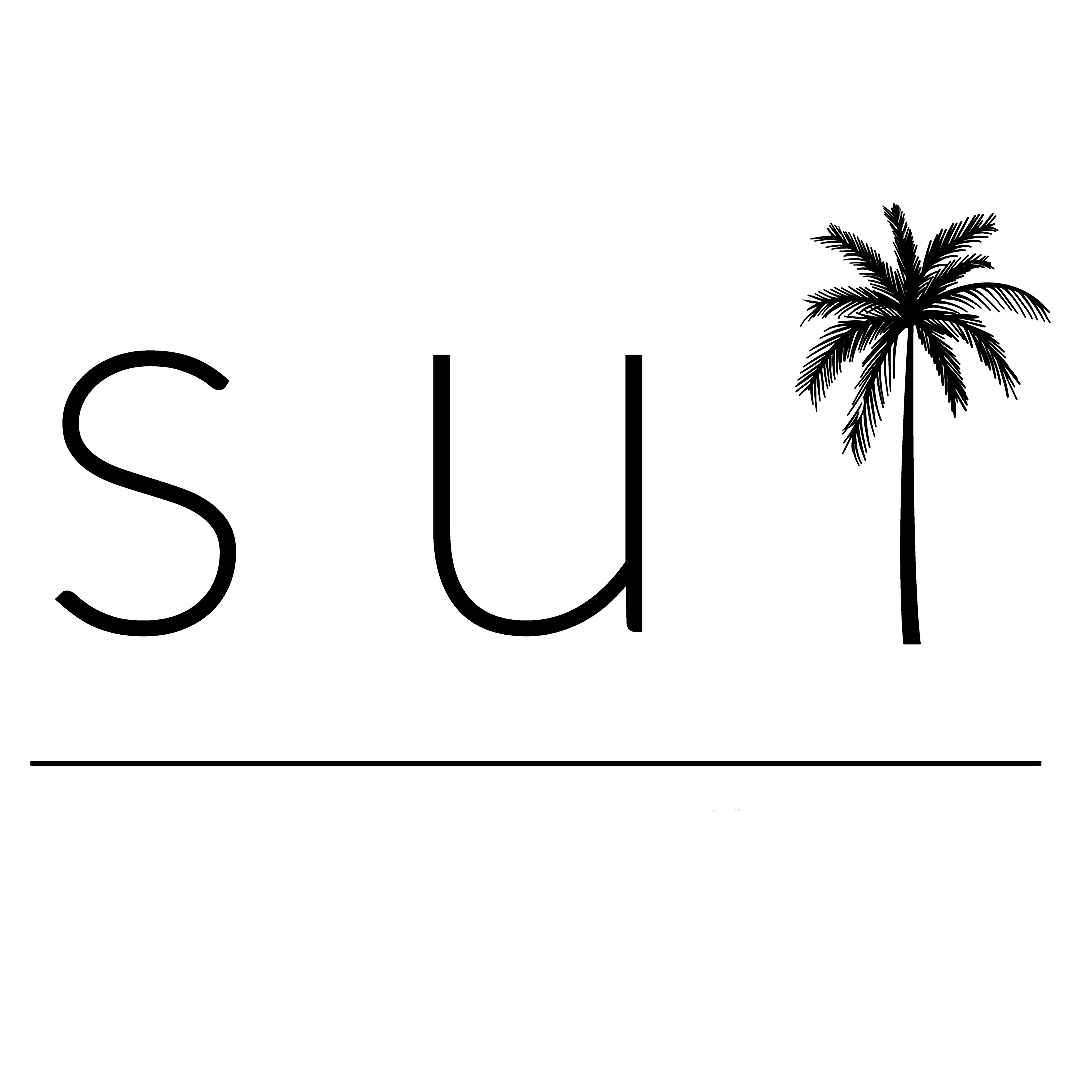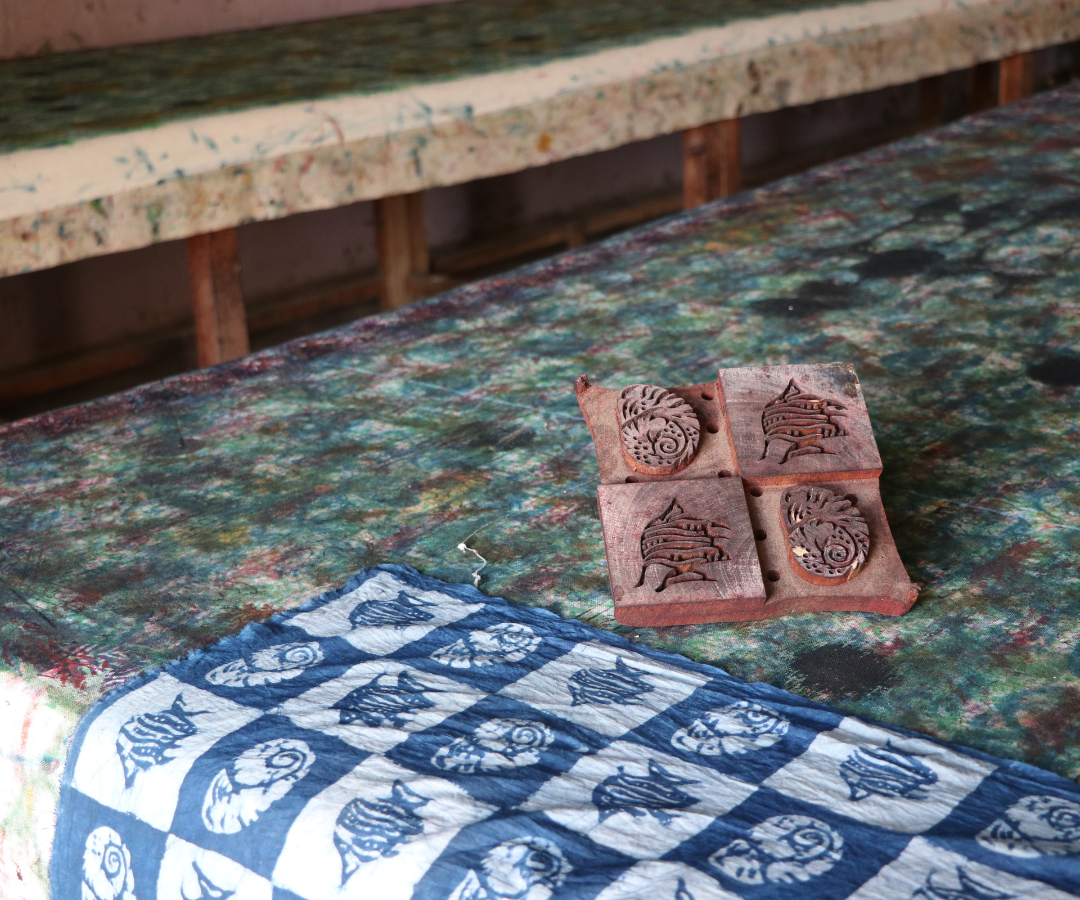Ever since humans were able to craft, innovate, trade, and sell, it’s been a constant race to supply consumers with everything they could want (or think they want) - and the fashion industry has, for a very long time, been at the forefront of running as fast a race as they can. The result of which is that we, as a global community, have left behind many methods and craft that favour a better, greener way.
These crafts, on the other hand, take a slower route, a more sustainable one, that not only favours the health of our environment, they nurture artisans and communities. Today, we would like to tell you more about 5 conscious crafts, all of which we ourselves have worked with, and share how positively impactful they are for our planet.
1. HAND BLOCK PRINT
Hand block print is a process traditionally done by-hand where a wooden block is carved into a pattern to then be applied to fabric. It’s an ancient Indian craft, the oldest record of which dates back to the Indus Valley civilisation around 3500 to 1300 BC, with some of the oldest excavated fragments of Indian printed cotton fabric being found in Egypt - showing that even in ancient days, Indian handicraft was renowned globally.

Today, the art is practiced in various parts of India with the root of it being said to be Jaipur, Rajasthan - it was then adapted in Gujarat, West Bengal, Maharashtra, and so on, just to name a few. Going back at least 300 years, the caste of printers in Jaipur, or chhipas as they’re known, have passed down the craft from generation to generation.

The hand block printing process is a long one. Preparing the wooden printing blocks themselves requires around 10 to 15 days, the process being that the blocks are carved by artisans, as intricately as the pattern requires, then soaked in oil for a week or so to ensure the wood is softened. Colours are mixed by hand, then the pattern, using the now ready blocks, is applied over and over again to fabric. The result is a print that is entirely created by human touch.
How is it sustainable?
- No need for electricity during the majority of the process meaning little to no carbon emissions.
- The printing blocks are created from wood, a natural, renewable and biodegradable resource that can easily be reaped sustainably.
- The art allows local/more rural economies to flourish in a sustainable way.
2. HANDLOOM
The handloom is an integral part of India’s handicraft history. Its roots trace back to the Indus Valley Civilisation; it was a symbol of independence and pride in our traditional handicrafts during British Colonisation; and, today, India produces over 90% of all handwoven textiles.

Although, the art was on its way to being non-existent due to colonial suppression, the sector now flourishes year by year with approximately 4.5 million people employed both directly and indirectly in the space, with about 72% being women. It's the country’s second largest employment after agriculture and exports worldwide.

Within India, there are an estimated 136 unique weaves that exist, and though the weaves vary in form, the art is widely done by-hand from fibre to fabric in this general way. Fibres are often sourced from local farms, utilizing native plants and materials, from cottons to silks, wools and so on. They are then handspun into yarns, which are then woven using a handloom. The result is a fabric created only by artisans through labour and honed skill!
How is it sustainable?
- No need for electricity during the majority of the process meaning little to no carbon emissions.
- The fibres usually come from natural, renewable resources like plant or animal fibres.
- The art utilises local resources, therefore uplifting local economies in a sustainable way.
3. UPCYCLING
Upcycling is the process of using discarded materials to create something new, often, of greater value. Although the method has become more and more popular with fashion brands, where they introduce accessories or garments made from recycled/upcycled materials, the notion itself has been around for centuries.
We all may be familiar with the idea of second-hand clothing and mending pieces where the damage isn’t so bad, however, many of us don’t see discarding clothing as a last resort. At this point, we could call ourselves a ‘throw away society’, one that, due to overproduction and overconsumption, is quicker to waste than ever before. Currently, when it comes to fashion, about 52 million tons of clothing is bought and about 92 million tons of textile waste is created annually.

One of the solutions to all this waste is recycling and upcycling, to repair or reinvent. There are so many ways to transform a piece of fabric: a tear in a t-shirt can be patched with another fabric altogether; a hole in your jeans embroidered over so it’s as good as new; or a scarf can become a tote bag! How we think about clothing is tied to how we treat our planet, and by realising that our waste can be of use, by creating a more circular system, we can make our world cleaner, greener.
How is it sustainable?
- Pollution as a whole will decrease. This will be due to not needing to produce more clothing when we utilise what is already made, therefore less carbon emissions, water waste, chemical pollution from dyeing and waste systems etc; and also less textile waste in landfills.
4. DABU
Dabu, or Daboo, is a mud-resistant hand block printing technique, the name itself is derived from the Hindi word ‘dabana’ meaning ‘to press’. Its origins date back to the 8th century and, specifically, its Indian roots can be traced to the village Akora, Rajasthan, where it is still actively being practiced!

During British colonisation, India’s many traditional handicrafts were suppressed and quashed, including Dabu, but, like many others post-Independence, it has been slowly revitalised in our modern day as the art is now utilised in various areas in Rajasthan and Gujarat.

The process itself is labour-intensive and, as mentioned, utilises one very important, natural ingredient: mud. The way it works is that a mixture; usually composed of mud, water, lime gum and wheat powder; is created then used to print the chosen motif. Where the mud is applied is where the fabric is blocked off from being dyed. The mud is dried, dyed in its intended way, then it is washed away to reveal the final pattern.
How is it sustainable?
- The use of natural resources means it’s safer for our environment and for artisans with no chemicals used within the process.
- The mud mixture is created from abundant, renewable sources that are biodegradable.
- Dabu printing is done by-hand, therefore no electricity is needed and no carbon emissions are created.
- The art allows local/more rural economies to flourish in a sustainable way.
5. INDIGO DYEING
Indigo is an ancient, natural dye extracted from the leaves of Indigofera plants. The name itself, “indigo”, comes from the Latin word indicum meaning “Indian”, as the dye was originally exported to Europe from India, where it grows in abundance. The earliest evidence of a fabric being dyed with indigo is around 6000 years ago, and since, has been popularly used all over the world to create brilliant blue hues for all sorts of garments and textile products.

Although today a synthetic version of indigo dye is used widely - it was found that by 2011 around 50,000 tons of it was being produced worldwide - that doesn’t mean the art is completely gone. In many parts of South and East Asia, like India and Japan, as well as places in South America, the slow, traditional way still exists, one that is much more eco-friendly.

To create the dye, Indigofera plants, which look a bit like basil, must be harvested just before their pink flowers bloom. The leaves are harvested, gathered together, and immersed in water, where they are weighed down and fermented. After the fermentation, the leaves are removed, and the water is drained so the solution can oxidise. The sediment will settle and become a powder that is dried and packed into cakes, ready for use.
How is it sustainable?
- Indigofera plants are a resource that’s natural, renewable and biodegradable, a much safer alternative to heavy chemical and synthetics.
- Very little machinery is used and so it produces much lower carbon emissions than its synthetic counterpart.
- Uplifts rural farmers, workers, and artisans, helping boost rural economies.
There are so many ways we can change our industry through making more sustainable production choices.These methods often keep us connected to our heritage, culture and world around us, showing us the value of our roots, and allows us to choose better in our everyday life! We hope this encourages you to choose more consciously and look for fashion that is actively going down the slower, greener path.
What other crafts do you want to know more about? Let us know, we’d love to tell you so much more about slow craft!

